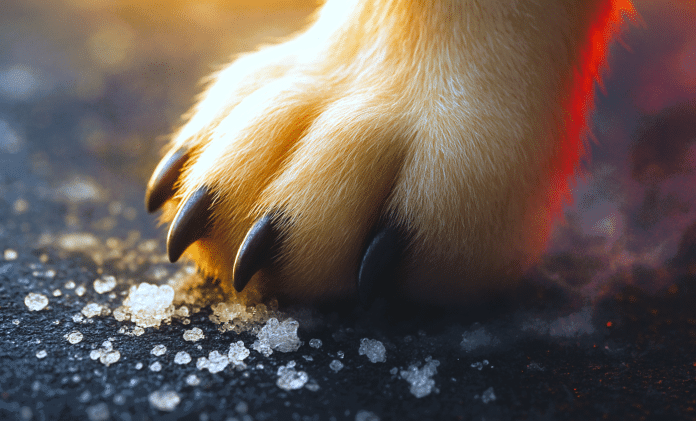Minneapolis, MN – As the first winter snow and deep freeze settle across Minnesota, veterinarians are urging pet owners to take precautions against one of the state’s most overlooked cold-weather hazards: road salt and chemical de-icers. While vital for keeping roads safe, these treatments can burn paw pads, irritate skin, and cause toxic reactions if pets lick or ingest them.
Most de-icing products used across Minnesota contain sodium chloride, calcium chloride, or magnesium chloride—substances that melt ice effectively but are rough on sensitive paws. Even a short walk across salted surfaces can lead to dryness, cracking, or chemical burns. When dogs lick their feet afterward, they can swallow salt residues that cause vomiting, diarrhea, excessive thirst, or lethargy. In serious cases, veterinarians warn that salt poisoning can result in seizures or kidney failure.
Experts note that Minnesota’s heavy reliance on road salt—particularly in urban areas like the Twin Cities—means pets face regular exposure throughout the winter. Some de-icers also include industrial contaminants or heavy metals, increasing the risk of long-term toxicity with repeated contact.
To protect pets, veterinarians recommend rinsing paws with warm water after each walk and drying them completely. Applying a paw balm or wax before heading outdoors creates a barrier against salt and ice, and trimming fur between toes helps reduce buildup. Booties can also offer strong protection for dogs that tolerate them, while homeowners are urged to use chloride-free, pet-safe ice melts around their property.
With temperatures plunging into the single digits and snow expected to accumulate through the weekend, veterinarians urge pet owners to keep outdoor time brief and to watch closely for limping, licking, or signs of discomfort.
As winter’s first major cold front grips Minnesota, experts remind residents that the greatest seasonal threat to pets isn’t the chill—it’s the chemicals spread to fight it.





